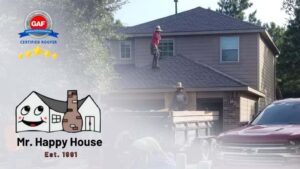
Best GAF Certified Roofers in The Woodlands, TX – Quality Roof Replacement, Gutters & Siding
Best GAF Certified Roofers in The Woodlands, TX – Quality Roof Replacement, Gutters & Siding Best GAF Certified Roofers in The Woodlands, TX – Quality
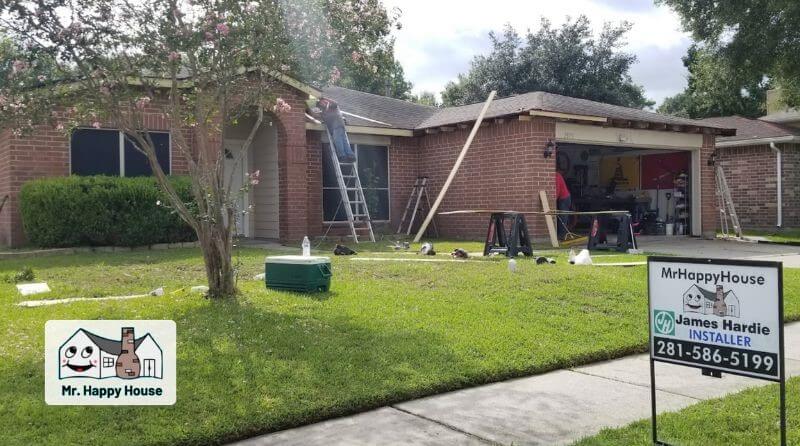
If you are wondering what is the best material to use for soffits and fascia, you came to the right place.
Soffits and fascia may not be the most eye-catching elements of a home’s exterior, but they play a critical role in protecting your home, the roof components and enhancing its overall appearance. These essential components not only provide a polished finish to your roof’s edges but also serve as a barrier against the elements, pests, and moisture infiltration.
Choosing the right material for your soffits and fascia is a decision that shouldn’t be taken lightly, as it can impact the longevity, maintenance, and aesthetics of your home. In this comprehensive guide, we will explore the various materials commonly used for soffits and fascia, diving into their unique advantages and disadvantages, to help you make an informed choice that aligns with your needs and preferences.
Whether you’re renovating, building a new home, or simply looking to upgrade your soffits and fascia, understanding the best material options is the first step towards achieving a beautiful and functional exterior that will keep your home protected for years to come.
This question isn’t a straightforward question, but rather a question about your budget and overall vision for your home’s exterior. If you’re looking for a quick fix and do not wish for your soffits and fascia to last a long time, the material you choose for your soffits and fascia can be different than if you’re looking to not want to deal with rot or worn down boards on a consistent basis.
So let’s dive into the different materials to use for soffits and fascia.
Wood has been a traditional choice for soffits and fascia for many years and sometimes can be the cheapest solution. Here’s a closer look at the characteristics and considerations associated with wood as a material for soffits and fascia:
Maintenance: One of the main drawbacks of wood is its need for regular maintenance. It requires periodic painting, staining, or sealing to protect it from the elements.
Cost: There are many types of wood that can be costly such as Cedar or Redwood, however general types of wood for soffits and fascia can be relatively cheap.
Vulnerability to Moisture: If not properly maintained, wood can warp, crack, or rot when exposed to moisture, making it less suitable for humid or rainy climates.
Insect Infestations: While cedar and redwood are naturally insect-resistant at times, other types of wood may be susceptible to termite or carpenter ant infestations.
Wood soffits and fascia offer a timeless, natural look that many homeowners find appealing. However, they require diligent maintenance to retain their beauty and durability. If you appreciate the aesthetic qualities of wood and are willing to invest in its care, it can be an excellent choice for soffits and fascia, particularly in regions with a dry climate where moisture-related issues are less of a concern.
Vinyl is a popular choice for soffits and fascia in northern regions of the United States, known for its affordability, low maintenance, and versatility in terms of appearance. Here’s a detailed exploration of vinyl as a material for soffits and fascia:
Vinyl soffits and fascia are crafted from polyvinyl chloride (PVC) resin, a synthetic material. They are manufactured to mimic the look of traditional wood without the associated maintenance requirements.
Durability: While vinyl is durable, it can become brittle over time, especially in extreme heat or cold conditions. However, high-quality vinyl products are engineered to withstand temperature variations.
Environmental Concerns: PVC is a plastic material and is not biodegradable. Some may have environmental concerns regarding the production and disposal of vinyl products.
Affordability: Vinyl is often more budget-friendly than natural wood or some other materials, making it an attractive option for easier installation and lower material costs.
Limited Repairability: In the event of damage, vinyl components may need to be replaced entirely, as repairing them can be challenging.
Vinyl soffits and fascia offer a cost-effective, low-maintenance solution for homeowners who desire the appearance of wood without the upkeep, however, note that vinyl soffits and fascia are not recommended for homes in extreme heat and humid climates as vinyl is known to warp and change formation in these hot climates.
Aluminum is a versatile and durable material commonly used for soffits and fascia. It offers several advantages that make it an appealing choice for homeowners. Here’s a closer look at aluminum as a material for soffits and fascia:
Aluminum soffits and fascia are made from lightweight, corrosion-resistant aluminum sheets. They come in various styles and finishes, including smooth, embossed, and wood grain textures.
Lightweight: The lightweight nature of aluminum simplifies the installation process.
Cost: While aluminum is not as expensive as some premium materials, it may be costlier than budget-friendly options like vinyl.
Appearance: Some homeowners may prefer the look of natural wood over the metallic appearance of aluminum, although wood grain textures can provide a more authentic aesthetic.
Noise: In heavy rain or hail, aluminum can produce more noise than other materials, which can be noticeable if your bedroom or living spaces are located near the roofline.
Impact Sensitivity: Aluminum is relatively soft compared to steel or other metals. This means that it can be more easily dented when subjected to impact, such as hailstones, falling branches, or even accidental contact during maintenance activities.
Surface Imperfections: Even minor impacts can leave noticeable dents on the surface of aluminum soffits and fascia. These dents can affect the aesthetics of your home’s exterior, especially if the damage is widespread.
Having aluminum soffits and fascia on your home isn’t recommended if you live in a wooded area and experience heavy storms and hail, as flying debris can easily dent up new aluminum soffits and fascia.
When it comes to choosing the best material for your soffits and fascia, James Hardie Siding, known for its HardiePlank or HardieBoard and Hardie Soffit, stands out as a top contender. Here’s a detailed look at why Hardie Soffits and Fascia are often considered the best choice:
James Hardie Siding is renowned for its exceptional durability. Hardie Soffits and Fascia are no exception. They are engineered to withstand the harshest of environmental conditions, from intense sun exposure to heavy rain, snow, and even hurricane-force winds. The proprietary fiber cement composition ensures resistance to rot, decay, pests, and fire, providing your home with long-lasting protection.
One of the standout features of Hardie Soffits and Fascia is their ability to mimic the timeless beauty of natural wood. Homeowners can enjoy the classic, rustic charm of wood without the associated maintenance challenges. Hardie Siding offers a range of textures and finishes, including options that replicate the look of traditional wood, cedar planks, or shingles.
Hardie Soffits and Fascia are celebrated for their low maintenance requirements. Unlike real wood, which demands regular painting, staining, and sealing, Hardie Siding holds paint exceptionally well and requires minimal upkeep. This results in long-term savings and less hassle for homeowners.
Whether you live in a humid coastal area or a region prone to severe winters, Hardie Soffits and Fascia can handle it all. Their resistance to moisture makes them an ideal choice for wet or humid climates, while their robustness ensures they can withstand the rigors of extreme cold or heat without warping, cracking, or fading.
Hardie Siding, including soffits and fascia, can contribute to the energy efficiency of your home. Properly installed and insulated, they help regulate temperature and reduce heating and cooling costs. Additionally, the longevity of Hardie Siding makes it an environmentally sustainable choice, as it minimizes the need for frequent replacements.
To fully realize the benefits of Hardie Soffits and Fascia, professional installation is essential. Skilled contractors who are experienced with James Hardie products can ensure precise installation techniques, proper flashing, and sealing, which are crucial for optimal performance and longevity.
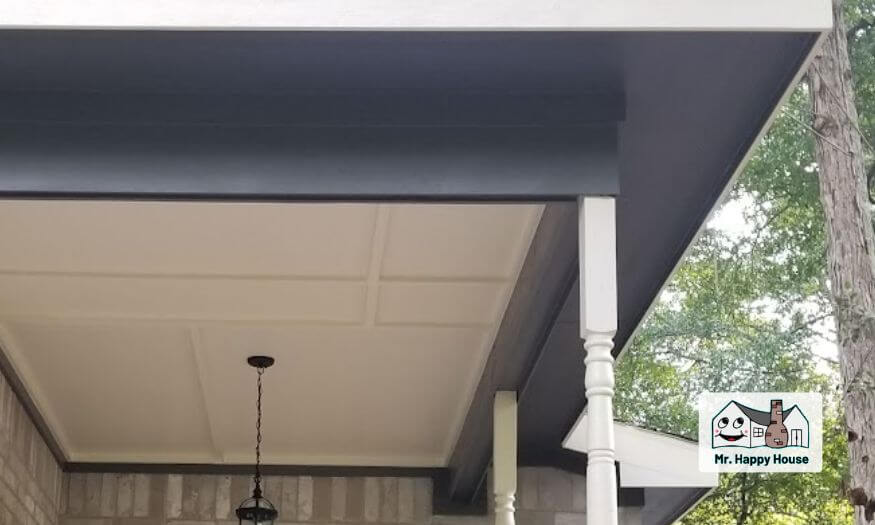
James Hardie Siding and Trim products have a reputation for durability, low maintenance, authentic aesthetics, and climate resilience makes it a compelling choice for soffits and fascia. Homeowners seeking a material that offers both protection and visual appeal will find that Hardie Soffits and Fascia deliver on all fronts.
When combined with professional soffit and fascia installation, they are a top-tier solution for enhancing the exterior of your home while safeguarding it for years to come.
As you consider the best material for your soffits and fascia, Hardie Siding should be at the top of your list, particularly if you prioritize longevity, aesthetics, and minimal maintenance in your home exterior.
We hoped you loved this article on what is the purpose of a soffit, please share and tune in for more roofing, siding, and house painting content!
Our Services:













Best GAF Certified Roofers in The Woodlands, TX – Quality Roof Replacement, Gutters & Siding
Best GAF Certified Roofers in The Woodlands, TX – Quality Roof Replacement, Gutters & Siding Best GAF Certified Roofers in The Woodlands, TX – Quality
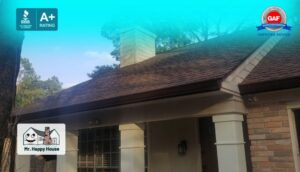
Are Gutters Part of the Roofing System?
Are Gutters Part of the Roofing System? Are Gutters Part of the Roofing System? When it comes to home maintenance, gutters often seem like a
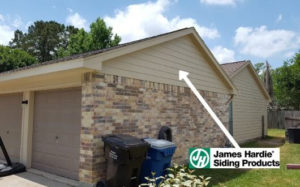
Why James Hardie is The Best Option for Home Siding
Why James Hardie is The Best Option for Home Siding Why James Hardie is The Best Option for Home Siding James Hardie stands out whether











